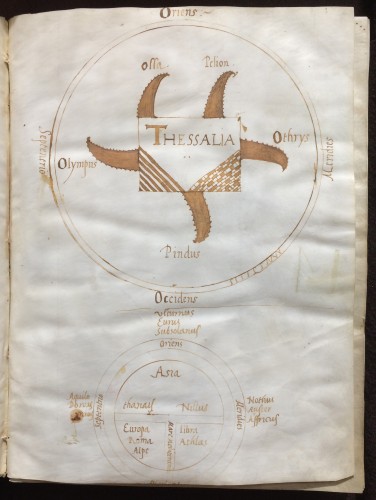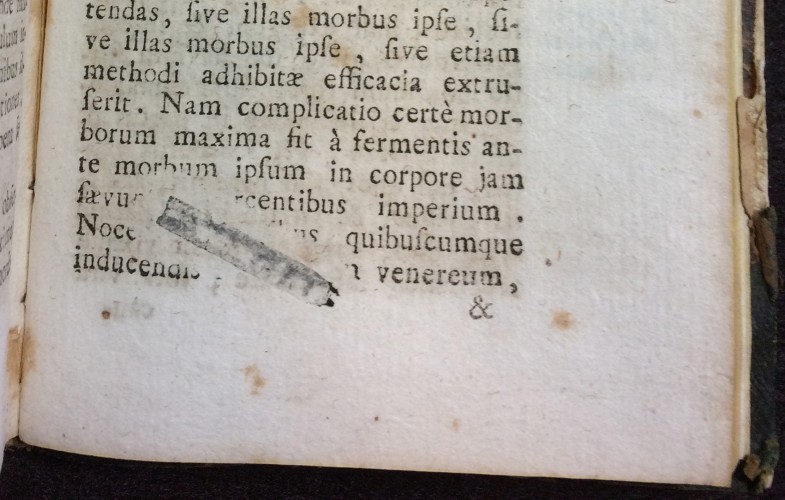We are pleased to announce the launching of our most recent Omeka exhibit: Marks in Books. In this online exhibit, the term "marks" refers to physical elements that have been added to manuscripts and early printed books throughout time, that is, from the instance when they were being made until they arrived to our shelves. Mostly, these marks were not intended by the authors, scribes and printers as they originally envisioned their books, but were later included in the form of corrections, readers' marginalia, drawings, and traces of subsequent ownerships as shown in bookplates and bindings. These marks are extraordinary witnesses offering unique information on various aspects of book history such as production, textual transmission, reception, and provenance history.

Top drawing: a schematic representation of a belt of mountains encircling the plain of Thessaly (central Greece); lower drawing: a typical T-O map: a depiction of the earth as a circle divided by a horizontal lines across an inner circumference, with the lower half divided by vertical lines forming a "T" in the circle.Folio 4r from Valerius Maximus (fl. 1st c. AD ). Factorum ac dictorum memorabilium libri IX (Memorable Deeds and Sayings). Parchment. Italy 15th c.

Ink mark left by a fallen type. Detail of page 277 of vol. 2 from Anne-Charles Lorry (1726-1783). De praecipuis morborum mutationibus et conversionibus, tentamen medicum, authore A.C. Lorry D. M. P. ; editionem post authoris fata curante J. N. Halle D. M. P. 2 vols in 1. (Naples: J. P. Merande, 1788).